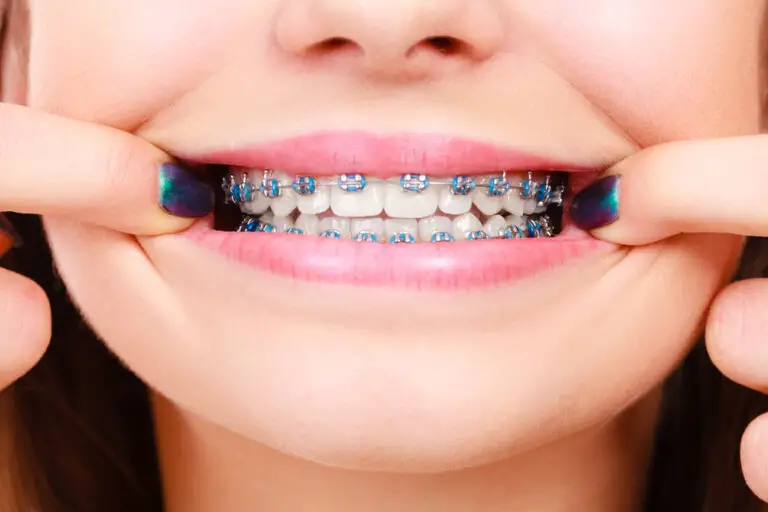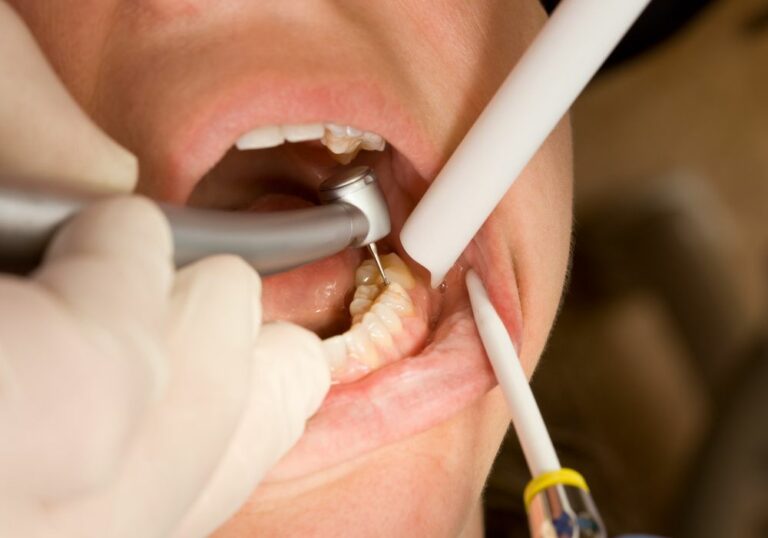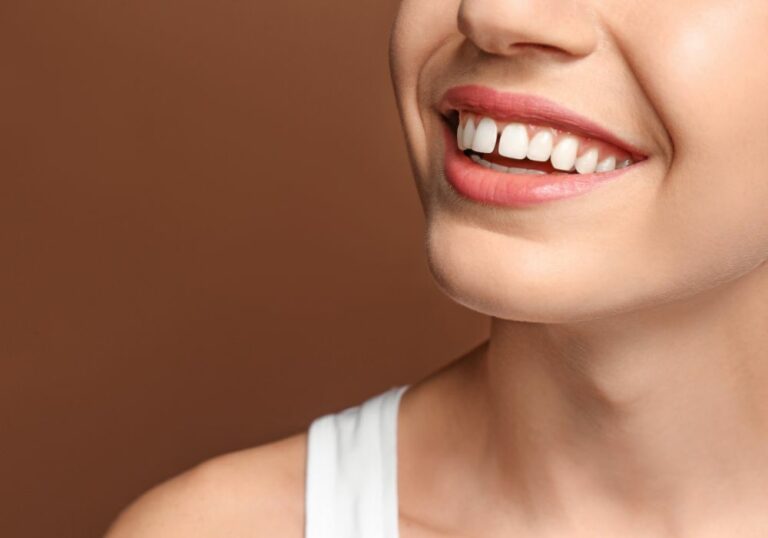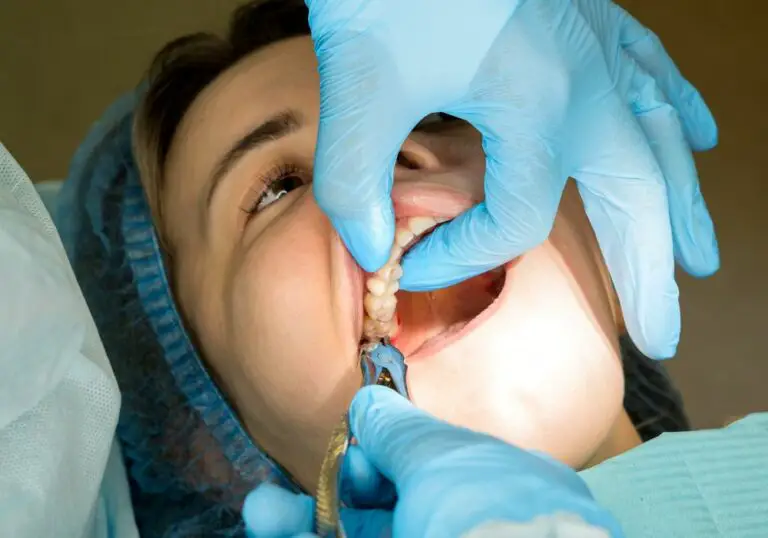When it comes to smiling, the position of your teeth can make a big difference in how confident and attractive you appear. But where should your teeth be when smiling? The answer is not as simple as you might think.
In a youthful smile, the upper front teeth should fill between 75 to 100 percent of the space between your upper and lower lips in a full smile. This creates a balanced and aesthetically pleasing appearance. However, as you age, your teeth may shift or wear down, causing your smile to change. Additionally, other factors such as the length and mobility of your lips can also impact the position of your teeth when smiling.
So, what can you do to ensure your teeth are in the right position when you smile? It all starts with proper dental care and regular check-ups with your dentist. They can help you maintain healthy teeth and gums, which can prevent shifting and other issues that can affect your smile. Additionally, if you are unhappy with the appearance of your teeth, cosmetic dentistry options such as veneers or braces may be able to help.
Understanding Your Smile
Your smile is one of the most important aspects of your appearance. It can make a big difference in how you feel about yourself and how others perceive you. Understanding your smile can help you make the most of it.
When you smile, your teeth play a big role in how your smile looks. The position of your teeth can affect the overall appearance of your smile. Your teeth should be aligned properly and should be positioned in a way that is aesthetically pleasing.
The position of your teeth can affect the overall symmetry of your face. A symmetrical smile is generally considered more attractive. If your teeth are not properly aligned, it can affect the balance of your face and make your smile appear less attractive.
It is important to note that everyone’s smile is unique. Your smile is a reflection of your personality and individuality. However, there are some general guidelines that can help you understand what makes a beautiful smile.
One important aspect of a beautiful smile is the position of your upper teeth. When you smile, your upper teeth should be visible. The amount of upper teeth that are visible will depend on the shape and size of your teeth, as well as the position of your lips and gums.
Another important aspect of a beautiful smile is the position of your lower teeth. When you smile, your lower teeth should also be visible. The amount of lower teeth that are visible will depend on the position of your upper teeth and the shape of your jaw.
Overall, understanding your smile can help you make the most of it. By paying attention to the position of your teeth and the overall symmetry of your smile, you can create a beautiful and confident smile that reflects your unique personality.
Proper Teeth Positioning When Smiling
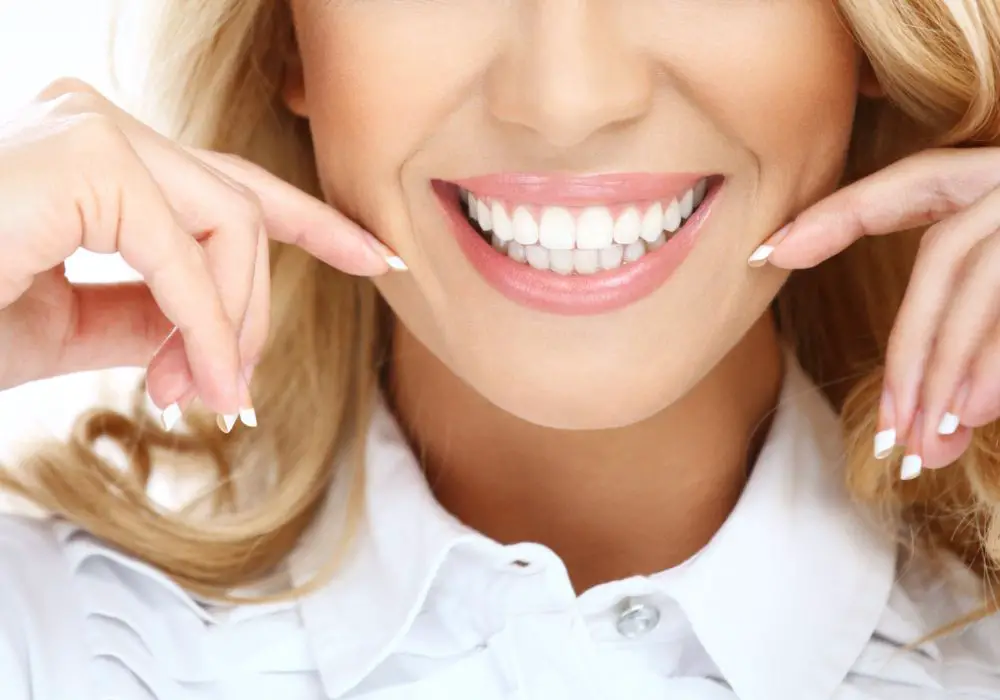
When you smile, the position of your teeth plays a crucial role in the overall appearance of your smile. Here are some tips to ensure that your teeth are in the proper position when smiling:
1. Show Your Upper Teeth
When you smile, your upper teeth should be visible. Ideally, the central and lateral upper incisors and canines should be fully visible, while the upper premolars and part of the first molar should be partially visible. Men tend to show less of their upper teeth, but it is still important to show some of them to achieve a natural and attractive smile.
2. Avoid Excessive Gum Show
While it’s important to show your upper teeth, showing too much gum can be unattractive. Ideally, only a small amount of gum tissue should be visible when you smile. If you show too much gum, it can make your teeth appear smaller and your smile less attractive.
3. Maintain Proper Alignment
Proper alignment of your teeth is also important when smiling. If your teeth are crooked or misaligned, it can detract from the overall appearance of your smile. If you have alignment issues, it may be worth considering orthodontic treatment to improve the appearance of your smile.
4. Consider Your Smile Line
Your smile line refers to an imaginary line along the incisal edges of your upper front teeth that should mimic the curvature of your lower lip while smiling. Ideally, your central incisors should be slightly longer than your lateral incisors, and your canines should be at the same level as your lateral incisors.
By following these tips, you can ensure that your teeth are in the proper position when smiling, resulting in a natural, attractive, and confident smile.
Impact of Teeth Position on Smile Aesthetics
When it comes to having a beautiful smile, the position of your teeth plays a crucial role. The way your teeth are positioned when you smile can have a significant impact on your overall smile aesthetics. In this section, we will explore the impact of teeth position on smile aesthetics.
Teeth Visibility
The visibility of your teeth when you smile is an essential factor in smile aesthetics. If your teeth are not visible enough when you smile, it can make your smile look dull and unattractive. On the other hand, if your teeth are too visible, it can make your smile look unnatural and forced.
Ideally, your upper teeth should be visible when you smile, and they should fill between 75 percent to 100 percent of the visual space created between your upper and lower lips. This will create a youthful and attractive look.
Teeth Alignment
The alignment of your teeth is another critical factor in smile aesthetics. If your teeth are crooked or misaligned, it can make your smile look unattractive and affect your overall facial appearance. Straightening your teeth can significantly improve your smile aesthetics.
Orthodontic treatments such as braces or clear aligners can help align your teeth and improve your smile aesthetics. In some cases, cosmetic dental treatments such as veneers or bonding may also be necessary to achieve the desired results.
Teeth Whiteness
The color of your teeth is also an essential factor in smile aesthetics. If your teeth are discolored or stained, it can make your smile look dull and unattractive. Teeth whitening is a popular cosmetic dental treatment that can significantly improve the whiteness of your teeth and enhance your smile aesthetics.
There are several teeth whitening options available, including in-office treatments, take-home kits, and over-the-counter products. It is essential to consult with your dentist to determine the best teeth whitening option for you.
In conclusion, the position of your teeth when you smile can have a significant impact on your overall smile aesthetics. Ensuring that your teeth are visible, aligned, and white can help you achieve a beautiful and attractive smile. Consult with your dentist to determine the best treatment options to improve your smile aesthetics.
Role of Lip Position in Smiling

When it comes to a beautiful smile, the position of your lips plays a crucial role. Lips frame your teeth and gums, and enhancing or correcting their shape, fullness, and symmetry can make your smile appear fuller and more attractive. Here are some important things to keep in mind about lip position when smiling:
- Lip line: The vertical position of the lower border of your upper lip is known as the lip line. It’s important to evaluate the lip line when smiling (smile line). The maximum upper lip elevation, during a strained smile, should also be assessed.
- Lip symmetry: Symmetry is important in creating an aesthetically pleasing smile. If your lips are uneven, it can affect the appearance of your teeth and gums.
- Fullness of lips: The fullness of your lips can also impact your smile. Fuller lips can make your smile seem more attractive and youthful.
- Alignment with facial features: The position of your lips should align with your facial features. For example, if you have a wide face, a wider smile may be more attractive. Similarly, if you have a narrow face, a narrower smile may be more aesthetically pleasing.
- Gum exposure: The amount of gum exposure when smiling is also important. Too much gum exposure can make your smile appear gummy, while too little can make your smile seem toothless.
Overall, the position of your lips is an important factor in creating a beautiful smile. By enhancing or correcting the shape, fullness, and symmetry of your lips, you can achieve a more attractive and confident smile.
Influence of Facial Muscles on Smile
When you smile, it’s not just your teeth that are involved. Your facial muscles play an important role in the appearance of your smile. The main muscles involved in smiling are the zygomaticus major and the orbicularis oculi.
The zygomaticus major muscle lifts the corners of your mouth, creating the upward curve that we associate with a smile. This muscle is also responsible for pulling your upper lip upward, exposing your upper teeth.
The orbicularis oculi muscle is responsible for raising your cheeks and creating the crow’s feet wrinkles around your eyes. This muscle is activated when you have a genuine smile, also known as a Duchenne smile.
When these muscles work together, they create a natural and genuine smile that is attractive and inviting. However, if your smile is forced or fake, these muscles may not be activated in the same way, leading to a less appealing smile.
It’s important to note that the position of your teeth also plays a role in the appearance of your smile. If your teeth are crooked or misaligned, it can affect the way your smile looks and may even impact your confidence.
Overall, the influence of facial muscles on your smile is significant. By understanding how these muscles work and the role they play in creating a natural smile, you can work to improve the appearance of your own smile and boost your confidence in the process.
Professional Help for Smile Improvement
If you’re looking to improve your smile, there are a variety of professional options available to you. Here are two options to consider:
Orthodontics
Orthodontics is the branch of dentistry that focuses on correcting teeth and jaw alignment issues. If your teeth are crooked, crowded, or have gaps between them, orthodontic treatment may be the solution. Braces and clear aligners, such as Invisalign, are two popular options for straightening teeth.
Braces use brackets and wires to apply pressure to your teeth, gradually moving them into the desired position. Clear aligners, on the other hand, use a series of custom-made trays to gently shift your teeth. Both options require regular check-ups with your orthodontist to monitor progress and make adjustments as needed.
Cosmetic Dentistry
Cosmetic dentistry is a branch of dentistry that focuses on improving the appearance of your teeth, gums, and bite. If you’re looking to enhance the overall look of your smile, cosmetic dentistry may be the way to go.
One popular cosmetic dentistry option is teeth whitening. This procedure uses a special gel to remove stains and discoloration from your teeth, leaving them looking brighter and whiter. Another option is veneers, which are thin, custom-made shells that are bonded to the front of your teeth to improve their appearance.
Other cosmetic dentistry options include bonding, which uses a tooth-colored resin to repair chips and cracks, and gum contouring, which reshapes your gum line to improve the appearance of your teeth. Your cosmetic dentist can help you choose the best option for your needs and budget.
Overall, if you’re unhappy with your smile, there are many professional options available to help you achieve the look you want. Talk to your dentist or orthodontist to learn more about which option is right for you.
Maintaining Your Smile

When it comes to maintaining a beautiful smile, there are a few things you can do to keep your teeth looking healthy and bright. In this section, we’ll cover two important aspects of maintaining your smile: oral hygiene practices and regular dental checkups.
Oral Hygiene Practices
Practicing good oral hygiene is essential for keeping your teeth and gums healthy. Here are a few tips to help you maintain a healthy smile:
- Brush your teeth twice a day: Use a soft-bristled toothbrush and fluoride toothpaste to brush your teeth for two minutes, twice a day. Be sure to brush all surfaces of your teeth, including the fronts, backs, and tops.
- Floss daily: Flossing helps remove plaque and food particles from between your teeth and along the gum line. Use a gentle sawing motion to slide the floss between your teeth, and curve it around the base of each tooth to remove any debris.
- Use mouthwash: Mouthwash can help kill bacteria that cause bad breath and gum disease. Look for a mouthwash that contains fluoride to help strengthen your teeth.
- Limit sugary and acidic foods: Sugary and acidic foods can erode your tooth enamel and lead to cavities. Try to limit your intake of these types of foods, and rinse your mouth with water after eating them.
Regular Dental Checkups
Regular dental checkups are important for maintaining good oral health. Here’s what you can expect during a routine dental exam:
- Cleaning: Your dental hygienist will use special tools to remove plaque and tartar from your teeth.
- Exam: Your dentist will examine your teeth and gums for signs of decay, gum disease, and other oral health problems.
- X-rays: X-rays can help your dentist identify any problems that may not be visible during a visual exam.
- Treatment: If your dentist finds any problems during your exam, they may recommend treatment options such as fillings, root canals, or extractions.
By following these tips and scheduling regular dental checkups, you can help maintain a healthy and beautiful smile for years to come.
Frequently Asked Questions
What is the ideal teeth alignment for a perfect smile?
The ideal teeth alignment for a perfect smile involves the upper teeth slightly overlapping the lower teeth, with the points of the molars fitting into the grooves of the opposite molars. The symmetry between the upper and lower jaw lines is also important, as well as top and bottom incisors that meet in a straight line. Having a comfortable and pain-free bite with little wear and tear on specific teeth is also important.
How should your teeth line up when your mouth is closed?
When your mouth is closed, your teeth should be aligned so that your upper teeth slightly overlap your lower teeth. This is known as a normal and ideal bite.
What is considered a normal and ideal teeth bite?
A normal and ideal teeth bite is when your upper teeth slightly overlap your lower teeth. This allows for proper chewing and biting, as well as a comfortable and pain-free bite.
What is the most attractive teeth shape?
The most attractive teeth shape is subjective and can vary based on personal preferences. However, research shows that teeth that are slightly rounded and not too long or too short are generally considered more attractive.
How long are the roots of your front teeth?
The length of the roots of your front teeth can vary, but on average, they are about two-thirds the length of the tooth above the gumline.
Should your bottom teeth show when you smile?
It is normal for your bottom teeth to show slightly when you smile, but they should not be visible to the extent that they overshadow your upper teeth. The upper teeth should fill between 75 to 100 percent of the space between your upper and lower lips in a full smile.

